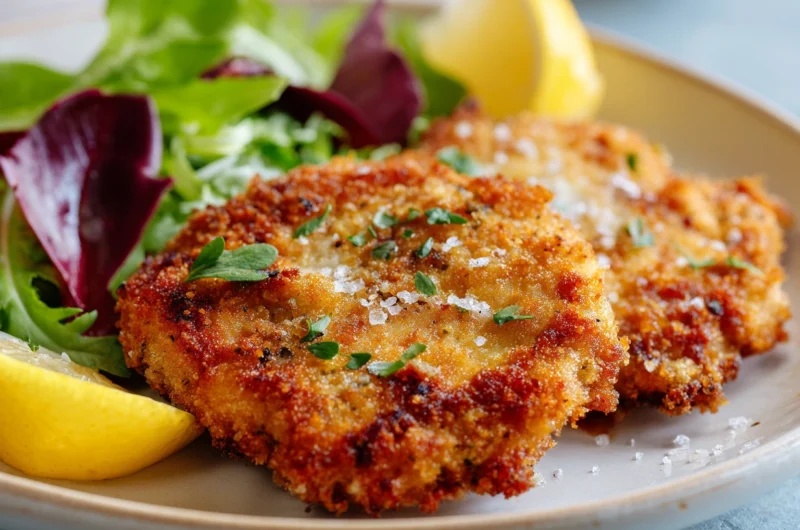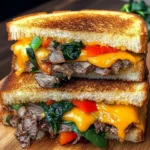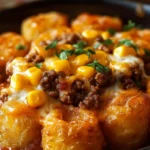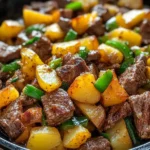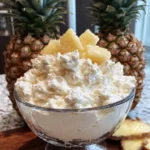The Best Fluffy Pancakes recipe you will fall in love with. Full of tips and tricks to help you make the best pancakes.
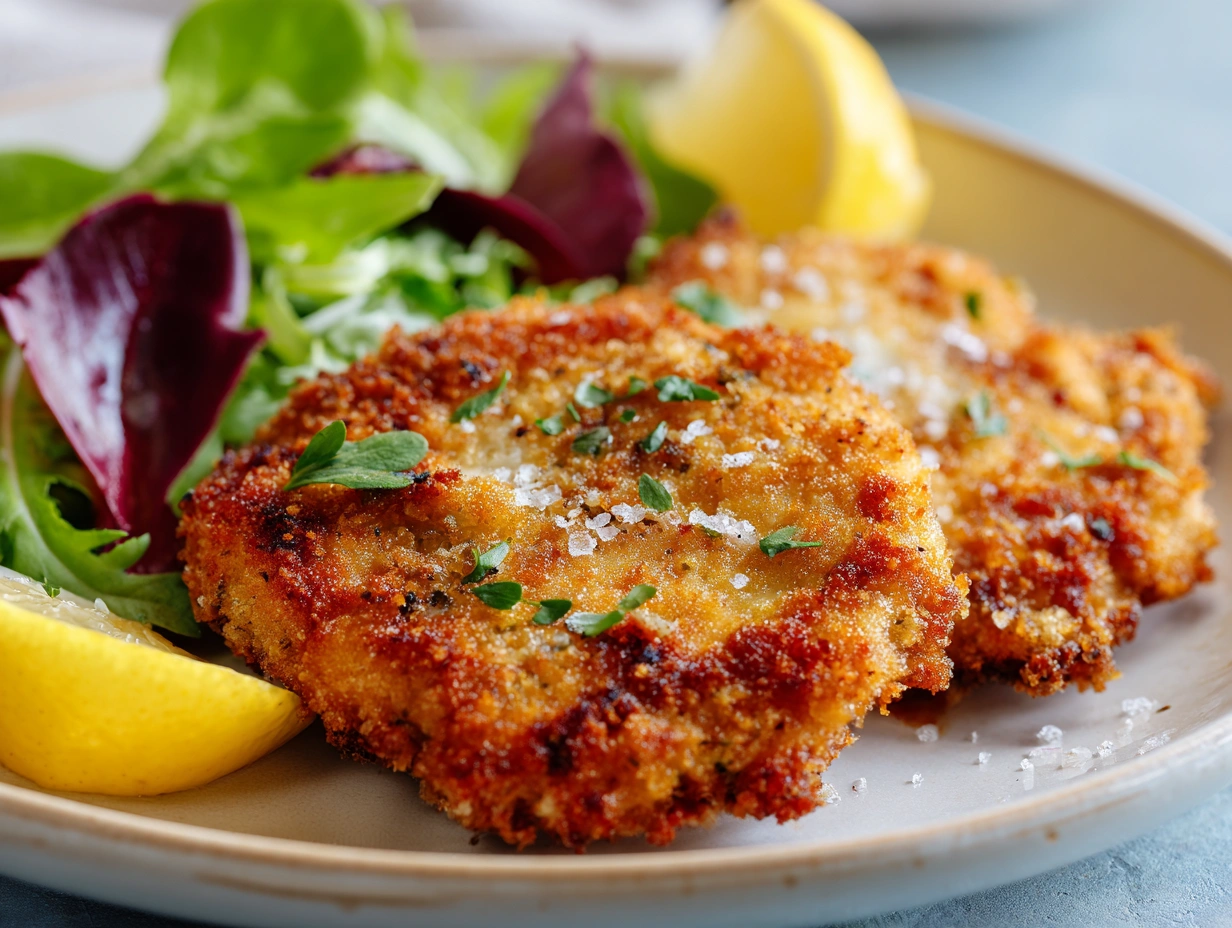
Nothing beats the satisfying crunch of perfectly golden Wiener Schnitzel – and you’re about to discover the secrets that will transform your home cooking forever.
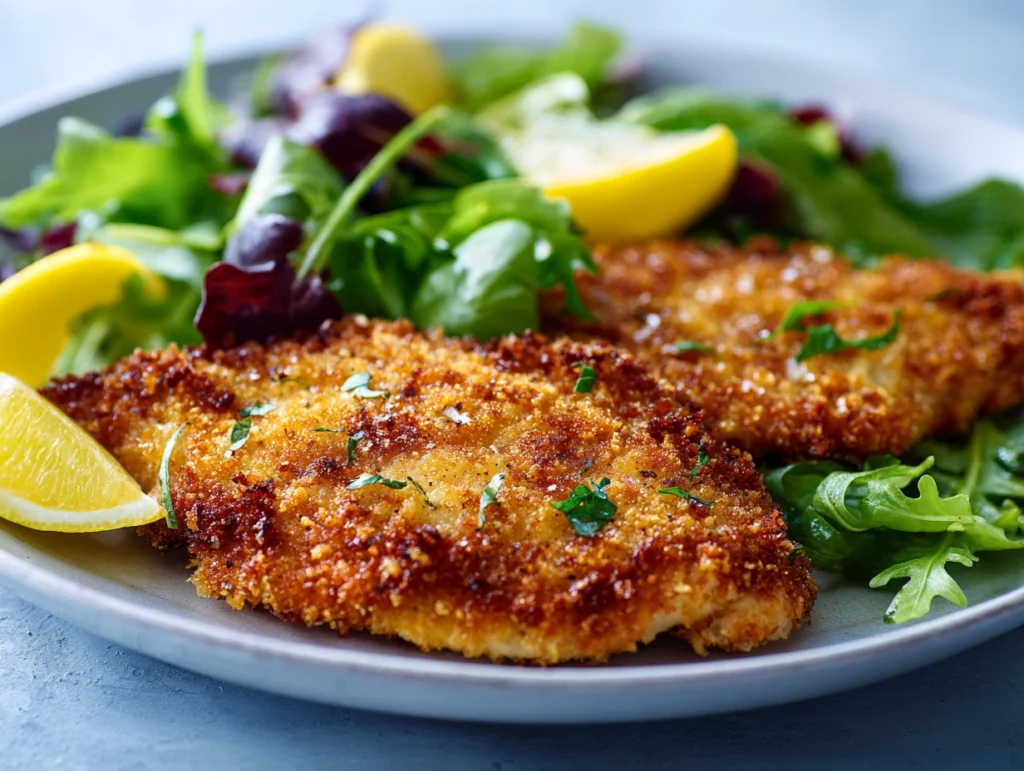
Picture this: you bite into a piece of tender veal encased in the most impossibly thin, golden-brown crust that shatters at first contact, revealing juicy, perfectly seasoned meat inside. That’s the magic of authentic Wiener Schnitzel, and today I’m sharing every professional chef secret to help you create restaurant-quality results right in your own kitchen.
Whether you’re planning a special dinner party, looking to impress your family with international cuisine, or simply craving that perfect comfort food experience, this comprehensive guide will walk you through every step of creating the most incredible Wiener Schnitzel you’ve ever tasted.
Table of Contents
What Makes Wiener Schnitzel So Special?
Wiener Schnitzel isn’t just any breaded cutlet – it’s a UNESCO-recognized culinary masterpiece that originated in Austria and has been perfecting palates for centuries. The name literally translates to “Viennese cutlet,” and when prepared correctly, it represents the pinnacle of European comfort food.
The secret lies in the technique: ultra-thin pounding of premium veal, a light-as-air breading that puffs up during cooking, and the perfect golden frying method that creates an almost ethereal texture contrast. Many home cooks struggle with soggy breading or tough meat, but with the right approach, you’ll achieve that coveted restaurant-quality finish every single time.
Essential Ingredients for Perfect Wiener Schnitzel
For the Schnitzel:
- 4 veal cutlets (6-8 oz each, preferably from the leg)
- 2 cups all-purpose flour (for the lightest coating)
- 4 large eggs (room temperature for best results)
- 3 cups fine dry breadcrumbs (panko works wonderfully)
- 1 cup neutral oil (sunflower or canola oil for optimal frying)
- 4 tablespoons butter (for that authentic Austrian flavor)
- 2 lemons (freshly squeezed, never bottled)
- Salt and white pepper to taste
For the Perfect Accompaniments:
- Baby potatoes (for traditional Austrian potato salad)
- Fresh parsley (for garnish and flavor)
- Capers (optional, but highly recommended)
- Cucumber (for refreshing side salad)
Step-by-Step Instructions
Step 1: Preparing the Veal (The Foundation of Excellence)
Start by placing your veal cutlets between sheets of plastic wrap or parchment paper. Using a meat mallet or rolling pin, gently pound the meat until it’s uniformly thin – about ¼ inch thickness is ideal. This crucial step ensures even cooking and that signature tender texture.
Pro Chef Hack: Place a damp kitchen towel under your cutting board to prevent slipping while pounding. This simple trick makes the process safer and more efficient.
Season both sides generously with salt and white pepper, then let the meat rest for 15 minutes. This allows the seasoning to penetrate the meat and helps achieve maximum flavor.
Step 2: Setting Up Your Breading Station Like a Pro
Create three separate shallow dishes for your breading assembly line:
- Flour station: Season your flour with a pinch of salt and pepper
- Egg station: Beat eggs until smooth and frothy
- Breadcrumb station: Spread breadcrumbs evenly in a wide, shallow dish
Kitchen Organization Tip: Arrange your stations from left to right in the order you’ll use them. Keep a clean towel nearby for wiping your hands between steps.
Step 3: The Art of Perfect Breading
This is where the magic happens. Dredge each cutlet first in flour, shaking off excess. Next, dip thoroughly in beaten egg, ensuring complete coverage. Finally, press gently into breadcrumbs, making sure every surface is evenly coated.
Secret Technique: After breading, let the schnitzels rest on a wire rack for 10 minutes. This allows the coating to set properly and prevents the breading from falling off during cooking.
Step 4: Achieving That Golden Perfection
Heat oil and butter in a large, heavy-bottomed skillet over medium-high heat. The oil should be about ½ inch deep – enough to partially submerge the schnitzel.
Temperature Test: Drop a small piece of breadcrumb into the oil. If it sizzles immediately and turns golden within 30 seconds, your oil is ready.
Carefully place schnitzels in the hot oil, cooking 2-3 minutes per side until golden brown and crispy. The key is maintaining consistent temperature – too hot and the outside burns before the inside cooks; too cool and you’ll end up with greasy, soggy breading.
Step 5: The Finishing Touch
Transfer cooked schnitzels to a paper towel-lined plate for just a moment, then immediately move to a warm serving platter. Squeeze fresh lemon juice over each piece and garnish with chopped parsley.
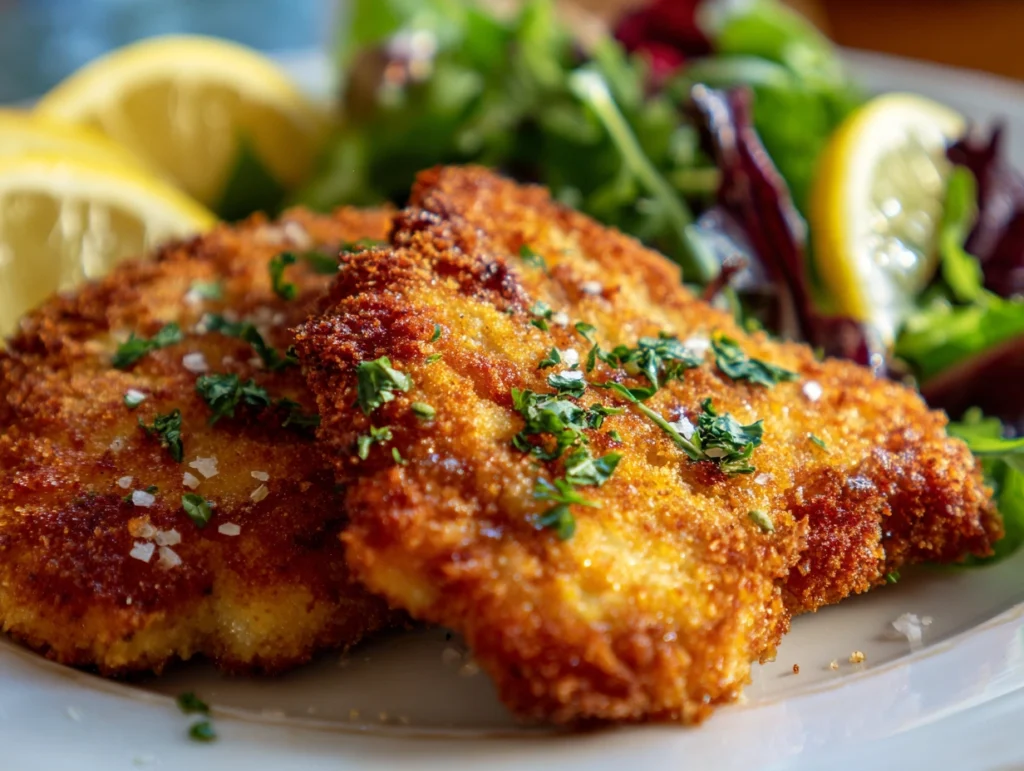
Professional Cooking Hacks for Schnitzel Success
The Oil Temperature Game-Changer
Invest in a digital thermometer and maintain oil temperature between 340-350°F (170-175°C). Consistent temperature is the difference between restaurant-quality and amateur results.
The Butter Secret
Adding butter to your oil isn’t just for flavor – it helps achieve that beautiful golden color and adds richness that pure oil can’t match.
The Resting Technique
Never skip the resting period after breading. This 10-minute wait allows the coating to adhere properly and prevents the dreaded breading separation.
The Shallow Frying Method
Unlike deep frying, Wiener Schnitzel should be cooked in about ½ inch of oil. This technique allows for better control and prevents the delicate breading from becoming too heavy.
Home Kitchen Tips for Schnitzel Preparation
Make-Ahead Strategy
You can bread your schnitzels up to 4 hours in advance. Simply cover and refrigerate until ready to cook. This actually improves the final texture as the coating has more time to set.
Equipment Essentials
- Heavy-bottomed skillet: Even heat distribution is crucial
- Meat mallet: For achieving uniform thickness
- Wire cooling racks: Essential for proper draining
- Digital thermometer: Takes the guesswork out of oil temperature
Storage and Reheating
Leftover schnitzel can be stored in the refrigerator for up to 2 days. Reheat in a 350°F oven for 5-7 minutes to restore crispiness – never use the microwave, which will make the breading soggy.
Troubleshooting Common Schnitzel Problems
Problem: Breading falls off during cooking Solution: Ensure meat is completely dry before breading, and let coated schnitzels rest before cooking
Problem: Soggy, greasy coating Solution: Oil temperature too low – increase heat and use a thermometer for accuracy
Problem: Burnt outside, raw inside Solution: Lower heat and cook more slowly, or pound meat thinner
Problem: Tough, chewy texture Solution: Don’t skip the pounding step – uniform thickness is essential
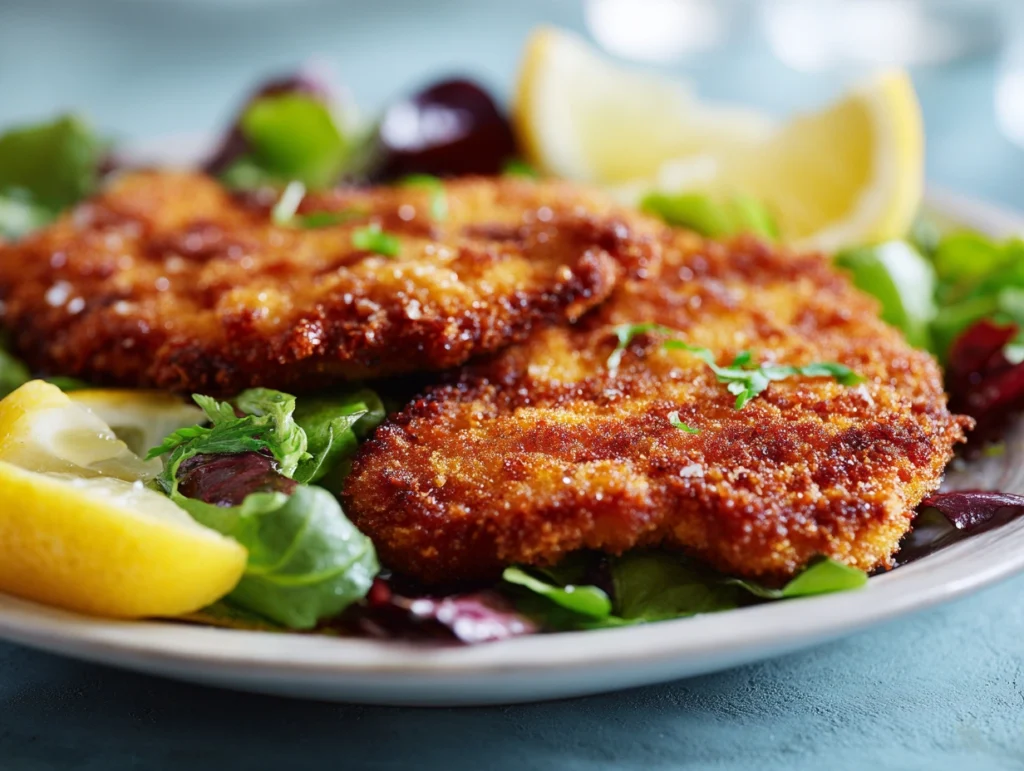
Authentic Austrian Serving Suggestions
Traditional Wiener Schnitzel is served with warm potato salad dressed in beef broth and vinegar, a slice of lemon, and sometimes lingonberry preserves. For a modern twist, try serving with:
- Crispy roasted vegetables tossed in herbs
- Cucumber salad with dill and sour cream
- Spaetzle for an extra indulgent meal
- Mixed greens with a light vinaigrette
Wine Pairing Recommendations
The crispy, rich nature of Wiener Schnitzel pairs beautifully with:
- Austrian Grüner Veltliner (traditional choice)
- German Riesling (the acidity cuts through richness)
- Light Pinot Noir (for red wine lovers)
- Czech Pilsner (for beer enthusiasts)
Nutritional Benefits and Considerations
Veal is an excellent source of high-quality protein, vitamin B12, and zinc. While Wiener Schnitzel is definitely an indulgent dish, you can make it slightly healthier by:
- Using whole wheat breadcrumbs for added fiber
- Serving with plenty of fresh vegetables
- Controlling portion sizes
- Using heart-healthy oils for frying
The Cultural Story Behind Your Meal
Every time you prepare Wiener Schnitzel, you’re participating in a culinary tradition that dates back to the 19th century. This dish represents the elegance of Austrian cuisine and the importance of technique in European cooking. It’s comfort food elevated to an art form.
Final Tips for Schnitzel Success
Remember, great Wiener Schnitzel is all about respecting the process. Don’t rush the pounding, don’t skip the resting, and don’t compromise on oil temperature. These small details make the difference between good and extraordinary.
The most important secret? Cook with confidence and enjoy the process. There’s something deeply satisfying about creating this classic dish from scratch, and the results will speak for themselves.
Ready to Create Your Own Schnitzel Masterpiece?
Now that you have all the professional secrets and techniques, it’s time to head to your kitchen and create some magic. Your family and friends are going to be absolutely amazed by the restaurant-quality results you achieve.
Have you tried this recipe? Share your schnitzel success stories in the comments below! Tag us on social media with your beautiful golden creations – we love seeing your culinary triumphs. Don’t forget to save this recipe and share it with fellow food lovers who deserve to experience perfect Wiener Schnitzel.
Pro tip: Take photos of your finished dish for social media – that golden, crispy coating is absolutely Instagram-worthy and will make all your followers crave this incredible meal.
Remember, cooking is about creating memories and bringing people together. This Wiener Schnitzel recipe isn’t just about the food – it’s about the experience, the tradition, and the joy of sharing something truly special with the people you care about most.
Happy cooking, and enjoy every crispy, golden bite!
Traditional Wiener Schnitzel Recipe | Crispy Austrian Veal Cutlets
Course: Main CourseCuisine: Austrian, German4
servings15
minutes10
minutes430
kcal25
minutesIngredients
4 veal cutlets (about 5 oz each)
Salt and pepper, to taste
½ cup all-purpose flour
2 large eggs
1 cup plain breadcrumbs (preferably fine, dry)
Vegetable oil or clarified butter (for frying)
Lemon wedges (for serving)
Directions
- Gently pound veal cutlets to about ¼ inch thickness. Season lightly with salt and pepper.
- Prepare 3 shallow bowls: one with flour, one with beaten eggs, and one with breadcrumbs.
- Dredge each cutlet first in flour, then dip in egg, and finally coat evenly with breadcrumbs. Do not press crumbs into the meat — light handling gives a crispier crust.
- Heat about ¼ inch of oil or clarified butter in a large skillet over medium-high heat.
- Fry schnitzels 2–3 minutes per side until golden brown and crisp.
- Drain briefly on paper towels. Serve immediately with lemon wedges.
Notes
- Traditionally made with veal, though pork or chicken may be used as more affordable alternatives.
To ensure maximum crispiness, do not overcrowd the pan during frying.
Serve with warm potato salad, parsley potatoes, or cucumber-dill salad.

